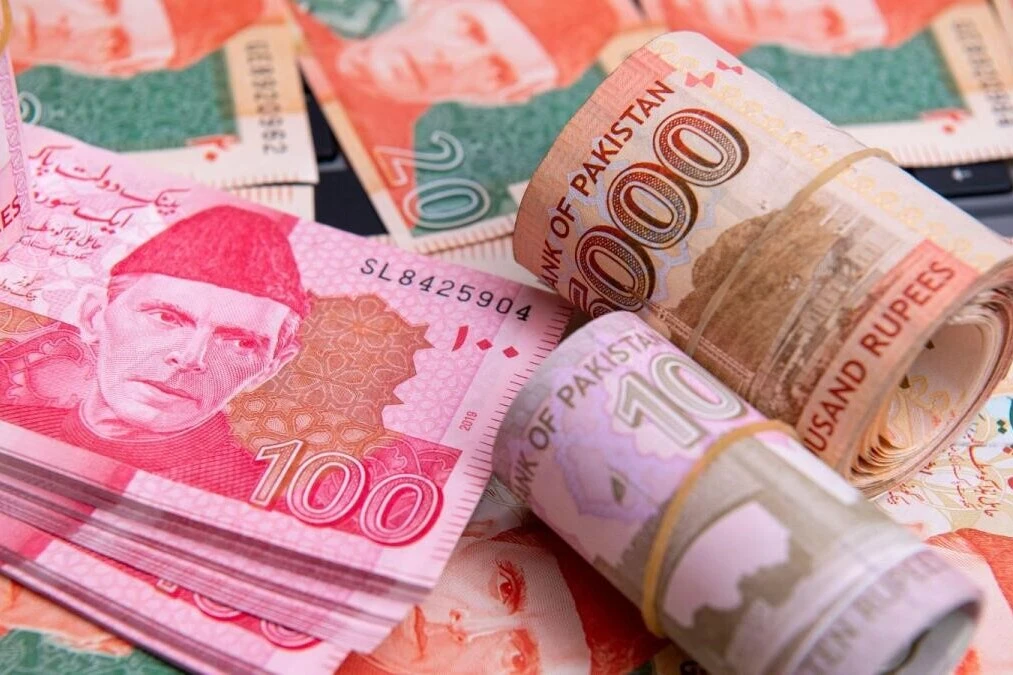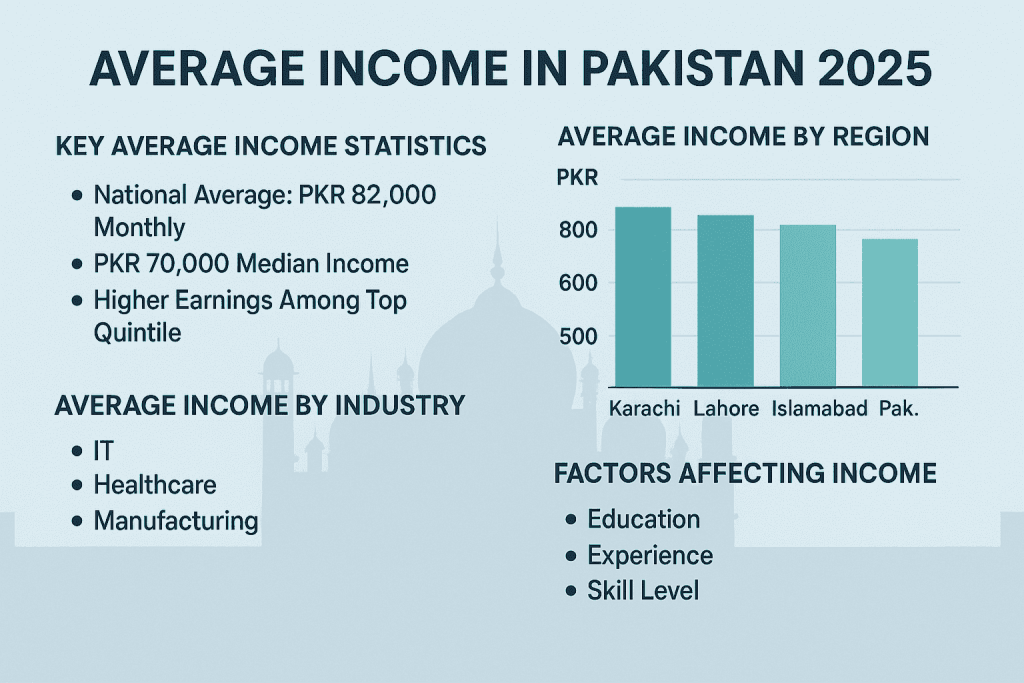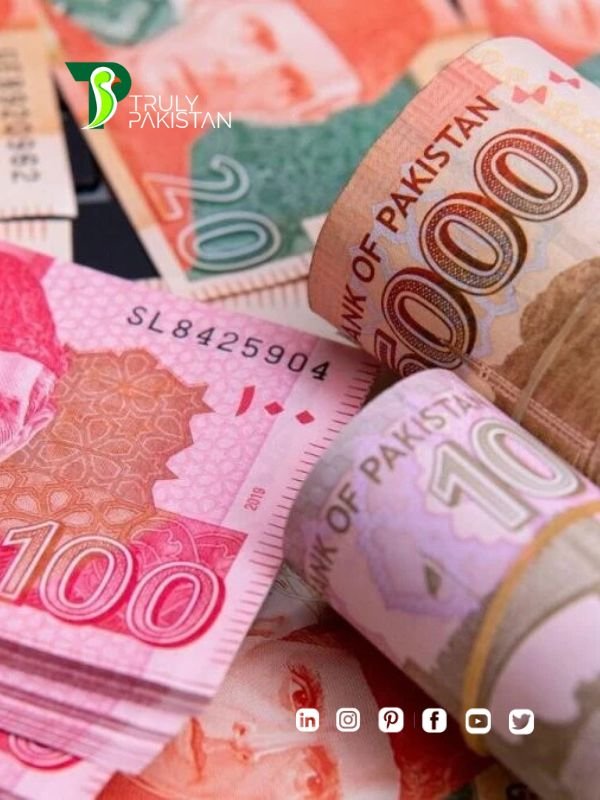Average income in Pakistan (2025): data, context, and clear takeaways


The average income in Pakistan provides a snapshot of how citizens actually live, work, and manage their expenses in an economy facing inflation, uneven growth, and sectoral imbalances. As of 2025, multiple data sources — including the Pakistan Bureau of Statistics (PBS), Trading Economics, and the Economic Survey of Pakistan — place the national average monthly income around PKR 82,000 (≈ USD 292). However, this figure hides significant differences across cities, industries, and skill levels.
Understanding these variations helps individuals, businesses, and policymakers make informed decisions — from job negotiations to regional investment planning.
Table of Contents
Key facts about average income in Pakistan (quick view)
Average income in Pakistan: current monthly and annual figures (PKR & USD)
According to 2025 estimates, the average monthly income in Pakistan stands at approximately PKR 82,100 (USD 292), while the annual average income is roughly PKR 985,000 (USD 3,500). The RemotePeople salary index and World Salaries database both confirm this range, based on thousands of reported pay slips and government survey data. Average monthly income: PKR 82,100 (≈ USD 292) Median income: PKR 70,700 (≈ USD 250) Minimum wage: PKR 37,000 (≈ USD 130) GDP per capita (2025): USD 1,824 (Economic Survey 2024-25)
Average income in Pakistan vs median income (why the gap matters)
The median income — what the middle worker earns — is often lower than the average. This gap reflects inequality: a small segment of high earners raises the overall mean. While the average salary in cities like Karachi and Islamabad can exceed PKR 100,000, rural or informal workers often earn below PKR 40,000 per month. Hence, relying solely on the average gives an inflated picture of economic well-being.
Average income in Pakistan by population quintiles (distribution snapshot)
Income data from the Household Integrated Economic Survey (HIES) shows a wide gap between income groups:
- Top 20% of households earn over PKR 110,000/month
- Middle 40% earn between PKR 55,000–75,000
- Bottom 40% earn less than PKR 40,000
This imbalance is reinforced by the World Inequality Database, which reports that the top 10% capture more than 40% of national income. Such inequality shapes not only social mobility but also consumer behavior and labor productivity across the country.
Average income in Pakistan by region and city
Average income in Pakistan: provincial comparison (Punjab, Sindh, KPK, Balochistan)
Provincial data show Punjab as the most balanced province in terms of employment distribution, while Sindh (driven by Karachi) leads in income. Balochistan remains lowest due to limited industry and infrastructure investment. As per the CEIC dataset, the provincial averages are:
- Sindh: PKR 93,000/month (highest, driven by Karachi’s formal economy)
- Punjab: PKR 78,000/month
- Khyber Pakhtunkhwa: PKR 68,000/month
- Balochistan: PKR 59,000/month
Average income in Pakistan: urban vs rural differences
Urban workers earn substantially more — nearly 1.8× higher than rural employees. For example, the Economic Survey 2025 highlights that urban households average PKR 90,000/month compared to rural households at PKR 50,000. This gap results from differences in job diversity, access to education, and industrial activity.


Average income in Pakistan by industry and role
Average income in Pakistan: highest-paying sectors (IT, finance, healthcare)
Pakistan’s service and technology sectors have become the biggest contributors to higher average incomes, especially in urban areas. According to Trading Economics and Paylab data, IT professionals, software engineers, and banking executives consistently earn 50–100% more than the national average.
- Information Technology (IT): PKR 150,000–250,000/month
- Finance & Banking: PKR 120,000–200,000/month
- Healthcare Professionals: PKR 100,000–180,000/month
- Education Sector: PKR 50,000–90,000/month
- Manufacturing & Supply Chain: PKR 60,000–110,000/month
Digital transformation and outsourcing have widened opportunities, particularly in Karachi, Lahore, and Islamabad, where multinational firms and remote contracts are creating higher salary benchmarks.
Average income in Pakistan: traditional sectors (agriculture, manufacturing, textiles)
Traditional sectors still employ the majority of Pakistan’s workforce but offer lower wage levels. The Labour Force Survey reveals that nearly 37% of employed Pakistanis work in agriculture, where average earnings hover between PKR 25,000–45,000 per month. Textile and light manufacturing workers typically earn PKR 45,000–65,000 monthly, depending on experience and export performance.
Average income in Pakistan: government vs private sector
Government employees benefit from job security and pensions but earn below private sector averages in most cases. Entry-level government officers earn about PKR 45,000–70,000 per month, while senior grades can exceed PKR 200,000. In contrast, private-sector executives in finance, telecom, or tech often earn multiples of that figure due to performance incentives and profit-linked bonuses.
Trends shaping the average income in Pakistan
Average income in Pakistan over time (2015–2025 trendline)
Between 2015 and 2025, Pakistan’s average income grew from roughly PKR 45,000 to over PKR 82,000 per month — an 82% nominal increase. However, when adjusted for inflation, real purchasing power has remained nearly flat. The Economic Survey of Pakistan 2025 attributes this stagnation to rising consumer prices, currency depreciation, and limited productivity growth.
Average income in Pakistan adjusted for inflation (real purchasing power)
Inflation averaged 20–25% between 2022 and 2024, eroding the value of nominal salary growth. While average wages increased, essentials like rent, fuel, and utilities grew faster. As a result, a PKR 80,000 salary today buys what PKR 55,000 could a few years ago. This widening gap highlights the importance of evaluating income using real terms, not face-value figures.
Average income in Pakistan and GDP per capita (how macro links to pay)
Pakistan’s GDP per capita rose to USD 1,824 in FY2025, according to the Economic Survey 2024–25. Despite this, household income growth lags behind GDP gains. The uneven distribution of growth benefits and structural reliance on remittances have restricted broad-based wage progress.
Inequality, minimums, and household context
Income inequality’s effect on the average income in Pakistan


The World Inequality Database shows Pakistan’s top 10% capture over 42% of total income, while the bottom 50% share less than 20%. This concentration skews the national average upward, concealing the struggle of low-income earners. Economic inclusion initiatives remain limited in reach, and rising living costs are widening this divide further.
Minimum wage vs average income in Pakistan (gap and implications)
The minimum wage was increased to PKR 37,000 per month in July 2024. However, this remains less than half the national average. Workers earning minimum wage in urban centers often spend 60–70% of their income on housing and transport alone. Bridging this gap requires consistent enforcement and cost-of-living indexing, especially for informal sectors.
Average household income in Pakistan vs individual income
Based on CEIC data and PBS surveys, the average household income in 2019 was PKR 41,545, rising to roughly PKR 68,000 by 2024. Yet, inflation-adjusted gains are minor. With an average household size of six people, per-person income averages less than PKR 12,000 — illustrating why poverty and underemployment persist despite headline wage growth.
Drivers that raise or lower the average income in Pakistan
Education, skills, and experience: impact on the average income in Pakistan
Education remains the strongest predictor of earning power. According to the Labour Force Survey 2021, individuals with a bachelor’s degree or higher earn up to 2.7 times more than those with only matriculation-level education. Skills in data analysis, programming, finance, and English communication further boost income potential across industries.
Experience adds a clear wage premium: employees with over 10 years of professional history often earn 60–80% more than entry-level workers. The Paylab Salary Explorer reports the following average monthly figures by experience level:
- Entry level (0–2 years): PKR 45,000–65,000
- Mid-level (3–9 years): PKR 80,000–120,000
- Senior-level (10+ years): PKR 130,000–250,000
Gender pay gap within the average income in Pakistan
The gender income disparity remains one of Pakistan’s largest structural issues. Women earn about 35–40% less than men in equivalent roles, according to EAG’s workforce study (2014–2024). Contributing factors include limited access to formal employment, occupational segregation, and the absence of workplace childcare facilities. Bridging this gap could significantly raise the national average income by increasing female labor participation rates.
Credentials, certifications, and English/tech skills: premiums on income
Global certifications such as ACCA, PMP, Cisco, and Google Career Certificates increase earning potential by 20–60%. Remote work has also amplified the value of English proficiency and digital skills, creating an emerging upper-middle class of remote freelancers and consultants earning in USD. The World Bank’s 2023 report noted that over 1.5 million Pakistanis are now part of the digital freelance economy.
International context for the average income in Pakistan
Average income in Pakistan vs India, Bangladesh, and Sri Lanka
When compared regionally, Pakistan’s average income is lower than India’s but higher than Bangladesh’s in nominal terms. As per the World Bank:
- Pakistan: USD 1,824 (2025)
- India: USD 2,610 (2025)
- Bangladesh: USD 1,750 (2025)
- Sri Lanka: USD 3,920 (2025)
Pakistan’s cost of living, however, is 30–40% lower than India’s urban centers, giving its residents slightly better purchasing parity despite lower salaries.
PPP and cost-of-living adjustments for the average income in Pakistan
Measured by Purchasing Power Parity (PPP), Pakistan’s GDP per capita reaches around USD 6,260, which better reflects local affordability. While nominal wages lag behind developed economies, essential goods and services — such as food, utilities, and domestic labor — are relatively cheaper. According to Numbeo, a single person’s monthly expenses (excluding rent) average PKR 45,000–60,000, making a PKR 100,000 salary comfortable in smaller cities.
Remittances and the average income in Pakistan (direct and indirect effects)
Pakistan receives over USD 30 billion annually in worker remittances, primarily from the Gulf region. These inflows raise local income levels indirectly by supporting family consumption, property purchases, and small businesses. In many rural households, remittances form more than half of total income. The State Bank of Pakistan reports that 2025 saw record inflows, contributing nearly 8% of GDP.
FAQ
What is the latest average income in Pakistan?
As of 2025, the national average income in Pakistan is approximately PKR 82,000 per month or USD 292, based on data from the Economic Survey of Pakistan and RemotePeople.
Which city has the highest average income in Pakistan?
Karachi ranks highest, with average salaries exceeding PKR 95,000 per month due to its industrial and financial dominance. Islamabad follows closely with PKR 90,000, and Lahore averages around PKR 85,000.
What is the minimum wage vs the average income in Pakistan in 2025?
The minimum wage is PKR 37,000 per month, less than half of the average. This disparity highlights affordability challenges in major cities, particularly for unskilled workers.
How has the average income in Pakistan changed over the last decade?
Nominal income nearly doubled between 2015 and 2025, but inflation offset much of the gain. Real wages increased by only 10–15% in purchasing power during the same period, according to the Pakistan Bureau of Statistics.
Is the median or the average income in Pakistan more reliable?
The median income is a better measure for most analyses because it isn’t distorted by outliers. In 2025, the median monthly income is roughly PKR 70,700, which better represents what the majority of Pakistanis earn.
Conclusion: the real-world meaning of the average income in Pakistan
Key takeaways and how to use this data for decisions
- The headline average income in Pakistan (~PKR 82,000/month) masks wide dispersion across cities, sectors, and skill levels.
- Median and quintile views matter more for everyday planning than the mean.
- Inflation has compressed real gains; pursue skills and roles linked to export revenue for outperformance.
- Use provincial/city benchmarks to calibrate “good salary” targets and negotiations.
Related Post: Minimum Wage in Pakistan 2025: Rates, Laws & Compliance


Author: ZunNurain Khalid — Travel & Tourism Specialist, Founder of ExploreX Pvt. Ltd., and advocate for sustainable tourism in Pakistan. With over a decade of experience in digital marketing and destination branding, ZunNurain has worked extensively on promoting Pakistan’s natural and cultural heritage.
References
- Pakistan Bureau of Statistics (PBS) — Labour Force Survey; Household Integrated Economic Survey.
- Economic Survey of Pakistan 2024–25 — macro indicators, wage and GDP context.
- Trading Economics: Pakistan Wages — time-series wage data.
- RemotePeople: Average Salary in Pakistan (2025) — consolidated ranges by role and city.
- WorldSalaries: Average Salary in Pakistan — distribution, percentiles, and job-level bands.
- Numbeo: Pakistan Cost of Living — basket-level monthly expenses.
- World Inequality Database: Pakistan — income shares and inequality trends.
- World Bank PIP: Pakistan — poverty and inequality profile.
- CEIC: Average Monthly Household Income (Pakistan) — provincial/urban-rural breakdowns.

